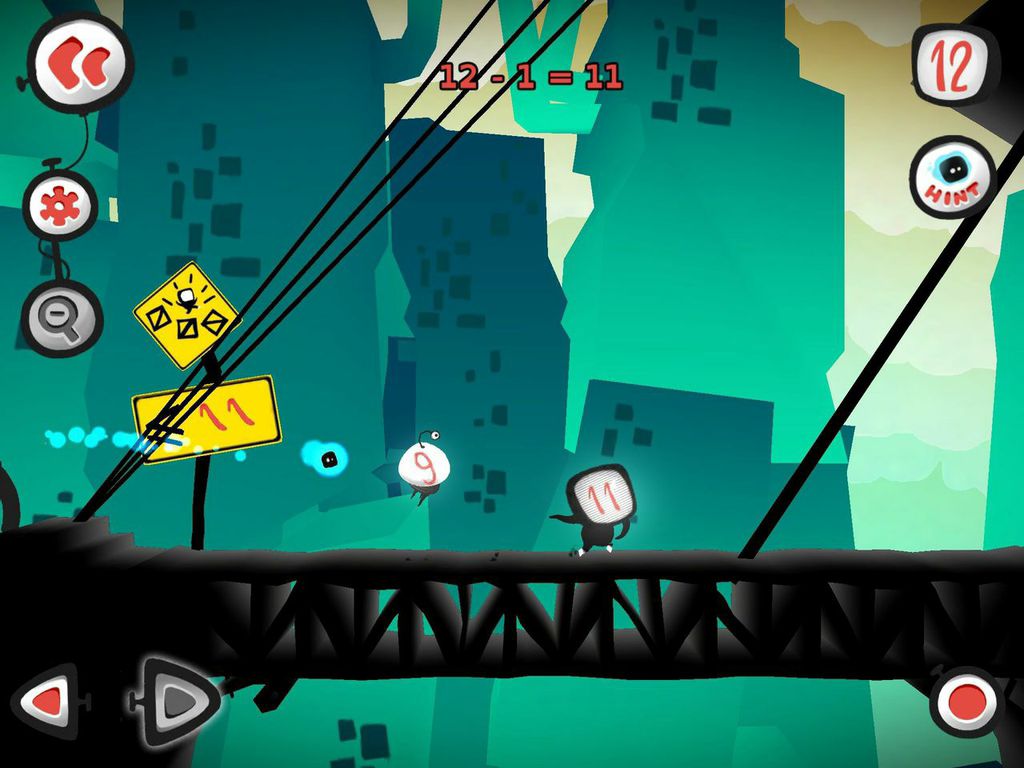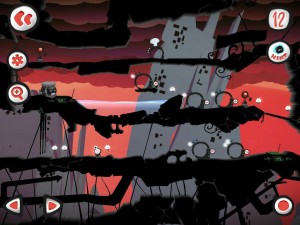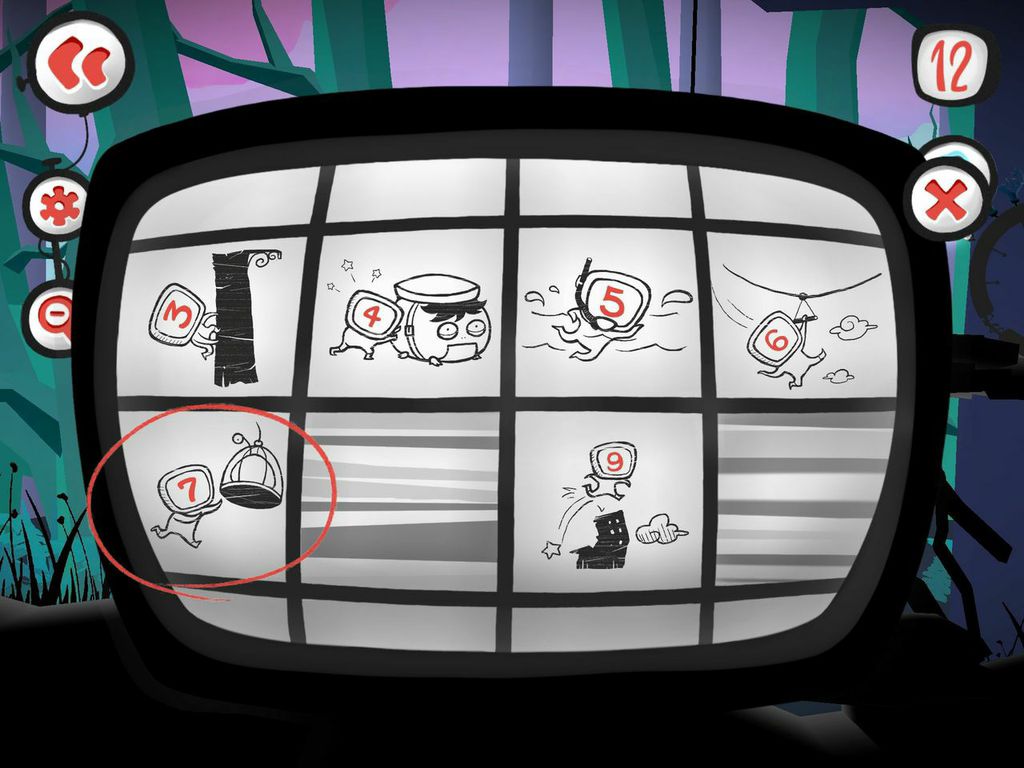
“Twelve” hits the App Store for iOS today, marking the first game Amplify has released to the consumer market.
The educational technology and digital curriculum firm Amplify is moving into the game publishing business.
Today the firm announced it would be making one of the 30 games they invested in for their new tablet available in the App Store for parents to purchase for their students.
“Twelve A Dozen” is the first game Amplify is putting out there and marks a new phase in the company’s evolution. The company recently rolled out a digital curriculum that aims to deliver personalized learning to students using the Amplify system. As part of that effort, the company announced earlier this year they would deploy a series of educational games to supplement that curriculum and “Twelve A Dozen,” an algebra game aimed at middle school students, was one of the apps.
We’ve built a fun and engaging way for students to develop some of the key skills they will need to succeed in algebra. Those who do well in algebra during junior high and high school are more likely to graduate and go on to college. We think game-based learning is a cutting-edge way to supplement what kids need to learn in school.
Joel Klein, CEO of Amplify
All of the game’s puzzles revolve around manipulating numbers—through subtraction, addition, division or multiplication—with the help of the ever-willing “nNumbles,” which follow Twelve in a numerical conga line.
Amplify’s vice president for games Justin Leites hailed the launch as the arrival of one of the best new educational games.
“As with our digital curriculum, our games support the learning goals articulated in the Common Core State Standards, but they also encourage and support students to go far beyond,” Leites told gaesandlearning.org in an exclusive interview. “We’re confident that there are no education games out there that meet the level of quality and academic rigor of our games.”
As they released their first game out into the commercial market, we talked with Leites about Amplify’s strategy and goals.
A New Market
gamesandlearning.org: First off, why release a game out into the chaotic markets of the App Store?
Justin Leites, VP of Games at Amplify: Games only have learning value if people play them. But most “educational games” are not very engaging.
So Amplify has invested in a portfolio of more than 30 new math, science, reading and writing games, designed by leading commercial game studios. We believe that these are the first games that rigorously addressing these academic learning goals, and that large numbers of children, ages 9 and up, will freely choose to play.
gamesandlearning.org: How do you all hope to stand out in the crowded “educational” games section?

Leites: “We commissioned work from some of the best commercial game designers in the world.”
Justin Leites: Although there are some great educational games out there for younger children, there are almost none that are innovative and engaging for middle school students. To help solve that problem, we commissioned work from some of the best commercial game designers in the world. Supporting the work of those designers, Amplify has an internal team of former teachers, education researchers, acclaimed authors, and artists.
As with our digital curriculum, our games support the learning goals articulated in the Common Core State Standards, but they also encourage and support students to go far beyond. We’re confident that there are no education games out there that meet the level of quality and academic rigor of our games.
gamesandlearning.org: Why are you not releasing a game on Google Play? Do you have any plans to do so?
Justin Leites: This is the first product we’ve ever released commercially, so for now we’re taking one step at a time, and are open to exploring more options down the road.
The Power of “Twelve”
gamesandlearning.org: Why start with “Twelve A Dozen?”
Justin Leites: We think that “Twelve A Dozen” is a really exciting game and a fun way for kids to learn key algebraic concepts, which is why we think it’s a perfect game to start with.
Studies show that students who study algebra throughout junior high and high school are more likely to graduate and go on to college, yet there’s a surprising lack of quality games out there that could help students who struggle with the subject. We hope “Twelve A Dozen” can offer that.
gamesandlearning.org: Do you envision your market for “Twelve A Dozen” and other games you might release as being aimed at schools investing in technology or parents?
Justin Leites: We made“Twelve A Dozen” available to the consumer market because we feel it can be of benefit to many different groups—parents, teachers, students, or those looking to brush up on math skills.
gamesandlearning.org: If it is consumers/parents, how does that change your business or marketing strategy compared the formal education focus of Amplify?
Justin Leites: Our strategy has been focused on schools and school districts, but the more we showed our games to people from every walk of life, the more we heard the same thing over and over again: “How can I get these games for my kid?” We decided that it would be worth exploring whether or not there’s a consumer appetite for these games, and we think that parents and others will be just as excited about these games as we are.
gamesandlearning.org: How did you all decide whether to make the game available as a freemium or paid download?
Justin Leites: We have made a substantial investment in our education games portfolio, and our challenge here is to make sure we can continue to build great games and invest in the kind of talent and resources that requires— while also making our games available to people at a fair and affordable price.
The “Secret Sauce” to Learning Games
gamesandlearning.org: In an interview with Edugameshub you said, “It’s a terrible mistake to try and put games in the classroom…” since it makes games not actual play and limits the time spent playing. Can you talk a little about the general experience Amplify has seen when it comes to games and learning.
What have you all learned about this the intersection of the two?

Leites: “If they “smell like school”, and have been designed primarily to be an unobtrusive assessment, kids will typically dismiss the activity as yet another form of testing.”
Justin Leites: Educational games need to have a high production value and should be as well-made and as engaging as the best commercial games. If they “smell like school”, and have been designed primarily to be an unobtrusive assessment, kids will typically dismiss the activity as yet another form of testing.
Making failure fun is another key element to a good educational game. If a kid does the “wrong thing” in an educational game, it should do more than just tell them that they were wrong, or how they were wrong. Making mistakes should have memorable and engaging consequences. Great games are the ones that are fun to play, not just fun to win.
That’s why “Twelve A Dozen” has a “rewind” feature that lets players undo mistakes and have fun exploring new math concepts.
Game players tend to understand that there’s a relationship between effort and success. We’ve incorporated “growth mindsets” a set of beliefs and attitudes that predict positive academic performance into our games. Rather than fear failure, players see how it can actually be a fun part of the process of getting better at something.
gamesandlearning.org: Do you plan on releasing a suite of games branded by Amplify?
Justin Leites: Our commercial plan right now is to put “Twelve A Dozen” out there and see how it’s received. If that goes well, then it’s very possible that other games would follow.
gamesandlearning.org: Do you have any specific metrics you plan to measure to inform later game releases or decide it is
a success?
Justin Leites: The key metric is, do people like it? Are they playing it, do they find it engaging? There are multiple ways to measure success and we’ll be looking at all of them.
